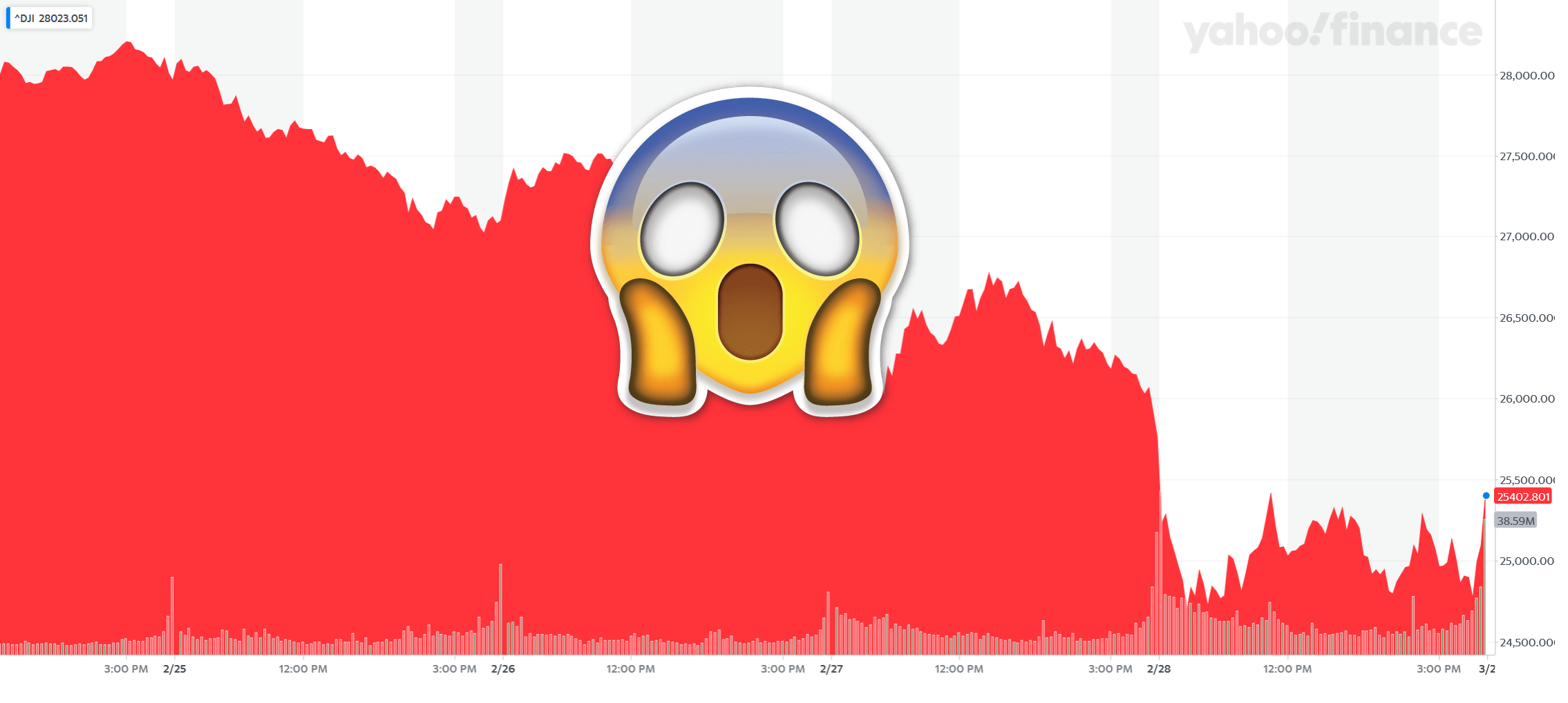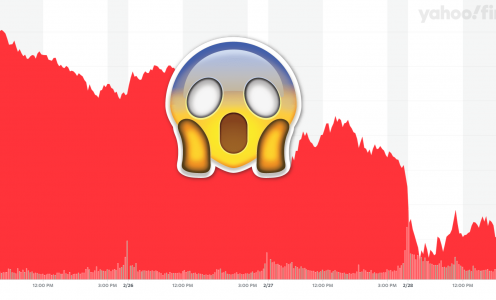Last week of February 2020 was brutal for the stock market. The global economy lost over $6 trillion dollars in value in just one week. People have lost 8% of their portfolio on average. Imagine logging into your brokerage account and seeing the chart below.
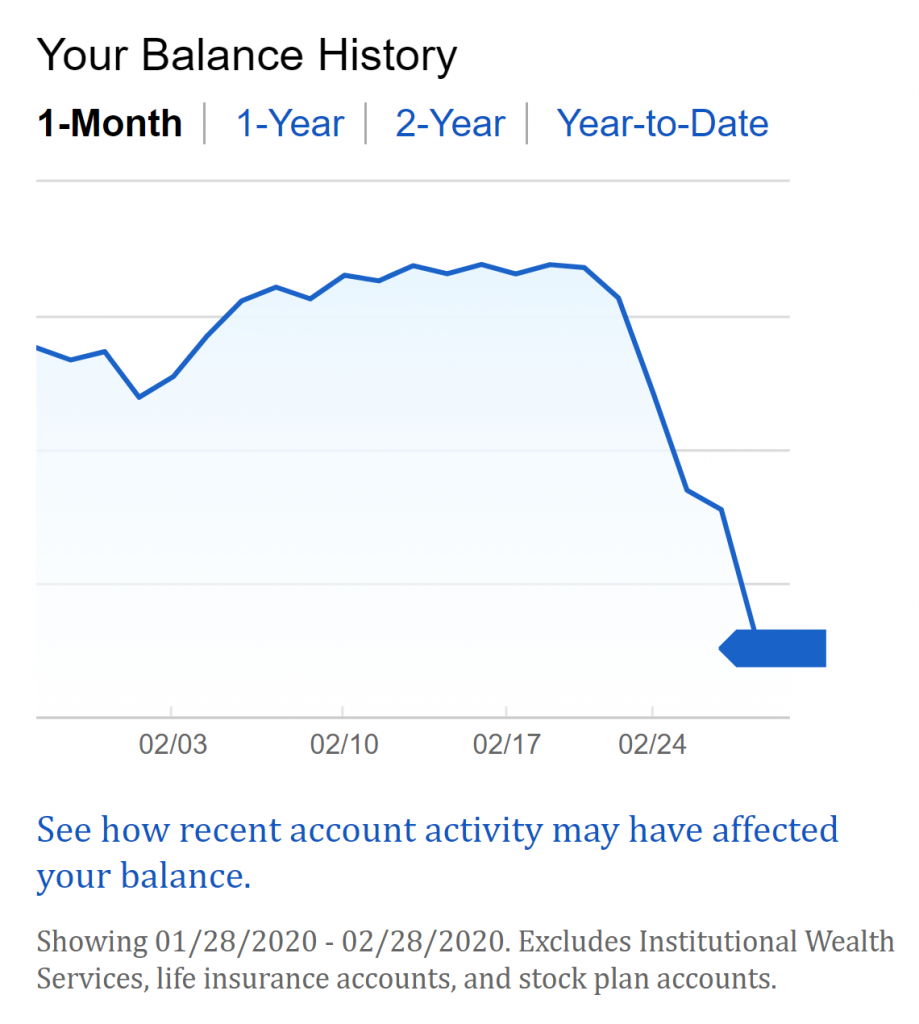
News outlets are beating the drum on coronavirus pandemic every day. There are signs of an economic slowdown in China, the US Bond yield curve inverted and Expedia is laying off 12% of the workforce. The streak of bad news seems to have no end in sight. In an environment like this, even the most risk-tolerant of us would be anxious and will consider pulling money out of the market before losing everything. Clearly the world is coming to an end so might as well live your last days on the cash you worked so hard to make.
That is the exact opposite of what you should be doing. Fear is the enemy of cold-hearted calculated investment strategy. A long term or dividend growth investor should just watch this circus from the sidelines and do exactly nothing.
Buy a business, not a stock
Buy a stock the way you would buy a house. Understand and like it such that you’d be content to own it in the absence of any market.
Warren Buffett
As cheesy as it sounds, you should pick a stock for the company it represents, rather than trends and hype of the market. Good companies continue making money regardless of the stock market conditions. Let’s look at Coca Cola during the market crash of 2007.

As the stock price took a dive in 2008 – 2009 (the blue line), the dividend continued to increase year after year (the green line). This happened because the company’s financials were unaffected by the market sentiment. In full transparency, there is a correlation between consumer confidence and market sentiment which can affect Coca Cola. However, a company would cut many things before it cuts the dividend.
As such, you should carefully pick each company for what it represents, regardless of where the market swings the stock price. If you do your homework, you will not fear a bear market.
Be a long term investor
I never attempt to make money on the stock market. I buy on the assumption that they could close the market the next day and not reopen it for five years.
Warren Buffett
Let’s face the truth, you will not be a good day trader. I am saying it not because you aren’t capable, but because you are unlikely to have the resources required to pull it off. Trading latency is key to making the right trades.
NASDAQ offers co-location services within its data center with less than 50-microsecond network latency. To put this into perspective, pull up your terminal window, type “ping facebook.com” and hit enter.
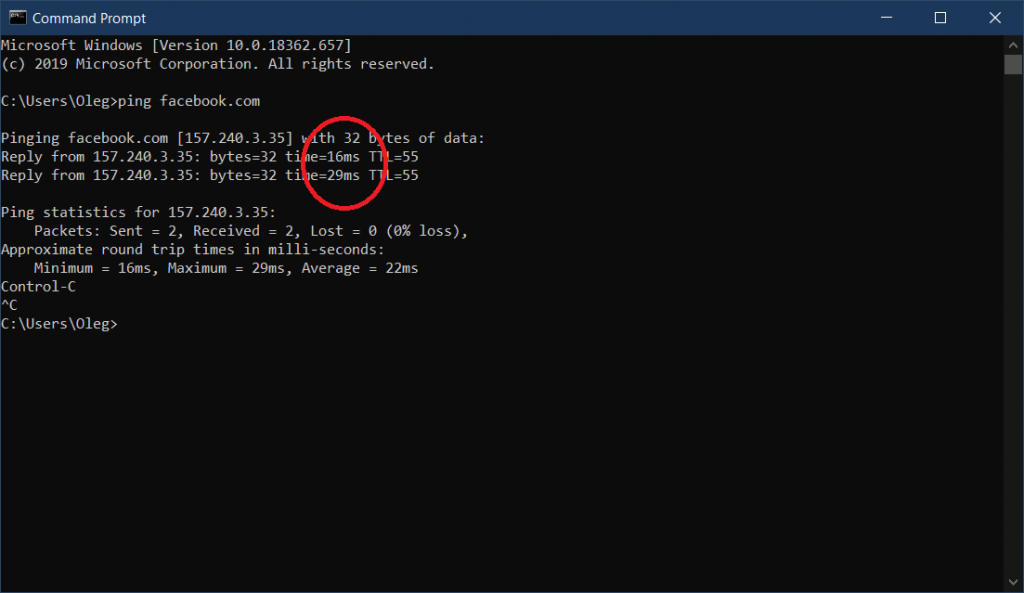
Network latency from your laptop to facebook.com is somewhere about 16 milliseconds, which is 320 times slower than network latency within NASDAQ datacenter. From driving school days we all know that humans take about 2 seconds to react to what’s happening around us. If you are day trading by watching a ticker feed, by the time signal arrives at your laptop and you process it with your brain, type and submit the order, automated trading platforms would have completed all their trades and forgot about them.
It is much less stressful and less error-prone to invest for years. Use the time to decide which companies to invest in. If you take a week to evaluate a company and it doesn’t go out of business in the meantime – it is a great sign!
Do not forget about compounding return on investments. If the company pays dividends, you can use them to buy more stocks of that company. The more you hold, the more dividends you get. It is a virtuous cycle.
If you start with 100 shares of KO in January 2005 and keep re-investing dividends into shares every quarter it will make a significant difference by January 2012. The blue line below depicts a portfolio value that is just holding 100 shares and spending dividends on ice cream. The green line represents a portfolio that re-invests dividends back into the stock. By January 2012 this portfolio will have 130 shares with a value difference of $1,049.55.
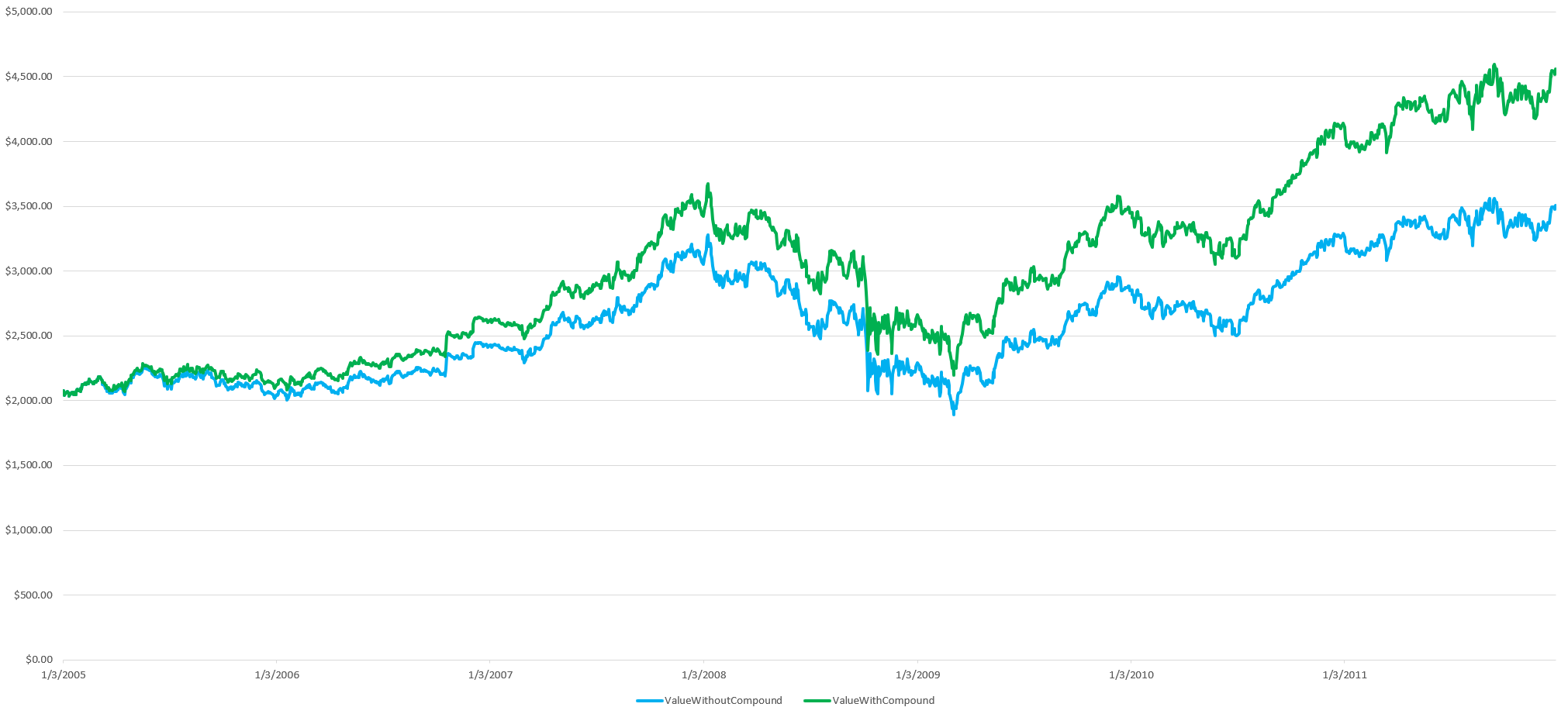
You can’t time the market
Since I know of no way to reliably predict market movements, I recommend that you purchase Berkshire shares only if you expect to hold them for at least five years.
Warren Buffett
The market is driven by fear and greed. When the majority of important economic indicators are positive, the market tends to go up. When they flash signs of concern, the market slows or turns bearish. Beyond this generalization, even Buffett can’t be more specific.
Let’s look at November 26, 2018, the day when the S&P 500 plunged on the escalation of the trade war between the US and China. Looking at the chart to the left of this point, you can’t predict the direction. In February 2019 the market went up from this position, but in November 2018 it dropped sharply.
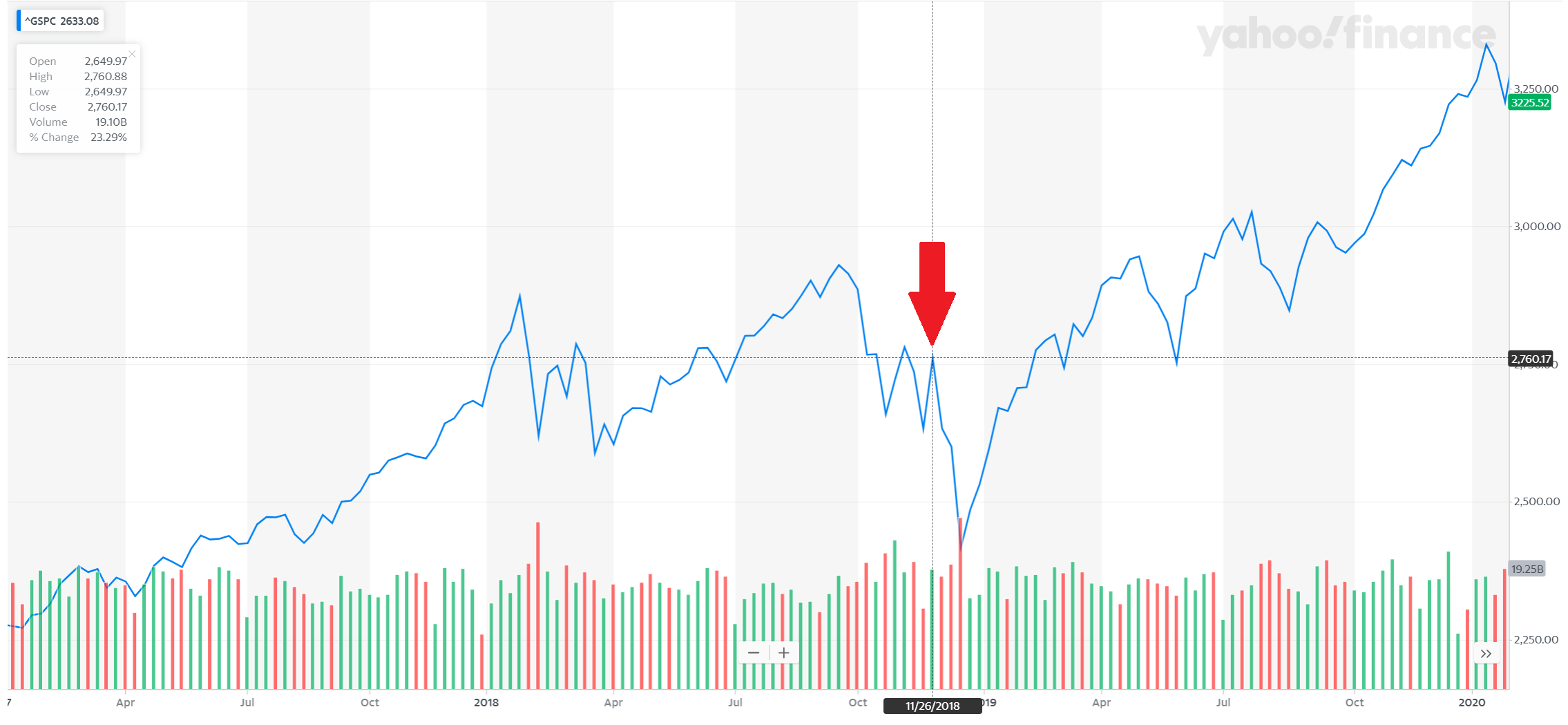
Statistically speaking, according to ofdollarsanddata.com, you can expect about 4 crashes with over 30% loss of value or 2 crashes with a 50% loss of value over 50 year period. Buckle up, buttercup.
Don’t miss the recovery
After every good crash comes well-deserved recovery. People that sell stock too late after the crash started to cut their losses are likely to miss out on the upwards trend of the market. Just like you can’t predict the crash precisely, you can’t predict the start of recovery. You are unlikely to sell at the tip of the top and buy at the pit of the bottom. If you do – SEC will come knocking.
It is also worth noting that selling stock has tax implications. Sell your stock short and you will pay income tax rather than capital gains. Buy stock again and you will pay regular income tax on dividends rather than qualified dividend income tax.
What if recovery doesn’t happen you say? Recovery is guaranteed by the human condition. Businesses will continue creating value during a downturn. There will be point in time when the company value will outweigh the stock price so much that human greed will prevail. The threshold is different for different people, but it exists. My favorite example is Ford Motor Company’s price in January 2009 – it reached $1.87 a share. The company continued to employ people and produce trucks, yet the stock price was so low that people couldn’t walk past it.
Buy more
The time to buy is when there’s blood in the streets.
Baron Rothschild
Here’s another good quote which we’ve all heard countless times.
Buy when everyone else is selling and hold until everyone else is buying,
J Paul Getty
You are holding great companies in your portfolio but their prices are dropping like flies in the snow. Should you buy more? The answer to this question is the same as the answer to the following question. If Ferrari decides to sell a handful of 812 GTS for $75,000 should you buy it?
When prices go down it is a great opportunity to increase your positions in companies you already hold. It comes for free during a bear market because the price is carried by the market. If the market is bullish and the company is dropping you may want to take another look.
Treat bear market is a post-holiday season sale. It won’t last long and you will get a great deal. Buy even more shares than you normally would. The lower the market drops, the more shares you should buy because recovery will be glorious.
